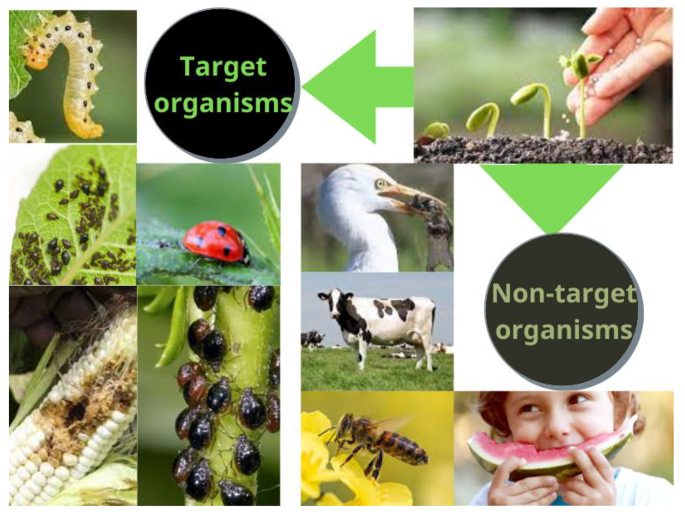3 Simple Techniques For Eco Bed Bug Exterminators Dc
3 Simple Techniques For Eco Bed Bug Exterminators Dc
Blog Article
The 7-Minute Rule for Eco Bed Bug Exterminators Dc
Table of ContentsGetting The Eco Bed Bug Exterminators Dc To WorkExcitement About Eco Bed Bug Exterminators DcSome Of Eco Bed Bug Exterminators DcEco Bed Bug Exterminators Dc for BeginnersThe Of Eco Bed Bug Exterminators Dc
Since chemicals are toxic, they are additionally potentially dangerous to humans, pets, various other microorganisms, and the atmosphere. Individuals that make use of pesticides or on a regular basis come in call with them have to recognize the relative poisoning, potential wellness effects, and preventative steps to decrease exposure to the items they use. Threat, or threat, of using pesticides is the capacity for injury, or the degree of threat included in making use of a pesticide under an offered collection of conditions.
However, applicators can decrease or almost eliminate direct exposure-- and therefore reduce threat-- by adhering to the label instructions, utilizing personal safety clothes and equipment (PPE), and handling the pesticide effectively. Even more than 95 percent of all chemical direct exposures come from dermal direct exposure, largely to the hands and forearms. By wearing a set of unlined, chemical-resistant handwear covers, this kind of direct exposure can be virtually gotten rid of.
The harmful impacts that happen from a solitary direct exposure by any route of entrance are termed "severe impacts." The 4 courses of exposure are dermal (skin), inhalation (lungs), dental (mouth), and the eyes. Acute toxicity is established by examining the dermal poisoning, breathing poisoning, and dental poisoning of test animals.
7 Easy Facts About Eco Bed Bug Exterminators Dc Shown
Severe toxicity is determined as the amount or concentration of a toxicant-- the a.i.-- needed to eliminate 50 percent of the pets in an examination populace. This action is usually revealed as the LD50 (dangerous dosage 50) or the LC50 (deadly focus 50). Furthermore, the LD50 and LC50 values are based on a single dose and are taped in milligrams of chemical per kg of body weight (mg/kg) of the test pet or partly per million (ppm).
The lower the LD50 or LC50 worth of a pesticide item, the greater its poisoning to human beings and pets. Chemicals with a high LD50 are the least harmful to humans if utilized according to the directions on the product label. The chronic toxicity of a chemical is determined by subjecting examination pets to long-lasting direct exposure to the active ingredient.
The chronic poisoning of a pesticide is harder than intense poisoning to figure out with laboratory analysis. Products are classified on the basis of their relative intense toxicity (their LD50 or LC50 worths). Pesticides that are classified as very harmful (Toxicity Category I) on the basis of either oral, dermal, or inhalation poisoning should have the signal words risk and toxin printed in red with a head and crossbones icon plainly showed this on the front panel of the plan label.
The severe (solitary dosage) dental LD50 for pesticide products in this team ranges from a trace amount to 50 mg/kg. For example, exposure of a couple of drops of a product taken orally could be fatal to a 150-pound individual. Some pesticide items have just the signal word threat, which tells you nothing about the intense toxicity, simply that the product can create severe eye damages or extreme skin irritation
How Eco Bed Bug Exterminators Dc can Save You Time, Stress, and Money.
In this category, the intense oral LD50 varieties from 50 to 500 mg/kg. A tsp to an ounce of this product could be fatal to a 150-pound individual (exterminator DC). Chemical products identified as either a little harmful or relatively safe (Toxicity Groups III and IV) are called for to have the signal word CAUTION on the pesticide tag

All pesticide toxicity values, including the LD50, can be discovered on the item's Material Safety and security Data Sheet (MSDS) - bed bug treatment. Pesticide labels and MSDS can be obtained from merchants or makes. On top of that, a lot of products additionally have details that can be discovered on the Web. The signs and symptoms of chemical poisoning can range from a moderate skin irritation to coma or perhaps death.
Since of potential wellness concerns, chemical users and trainers have to recognize the typical signs and signs and symptoms of chemical poisoning. The effects, or signs, of pesticide poisoning can be generally specified as either topical or systemic.
Eco Bed Bug Exterminators Dc Fundamentals Explained
Dermatitis, or swelling of the skin, is accepted as the most generally reported topical effect associated with pesticide exposure. Some individuals tend to cough, hiss, or sneeze when subjected to chemical sprays.
This signs and symptom typically subsides within a couple of mins after a person is removed from the direct exposure to the irritant. Nevertheless, a reaction to a pesticide product that triggers someone not just to sneeze and cough yet additionally to establish serious intense respiratory system signs and symptoms is more probable to be a real hypersensitivity or allergy.
Systemic results are rather different from topical effects. They frequently take place far from the original point of get in touch with as an outcome of the pesticide being absorbed into and distributed throughout the body. Systemic results commonly include nausea or vomiting, throwing up, exhaustion, frustration, and intestinal problems. In advanced poisoning instances, the individual might experience adjustments in heart rate, trouble breathing, convulsions, and coma, which could lead to fatality.
Report this page